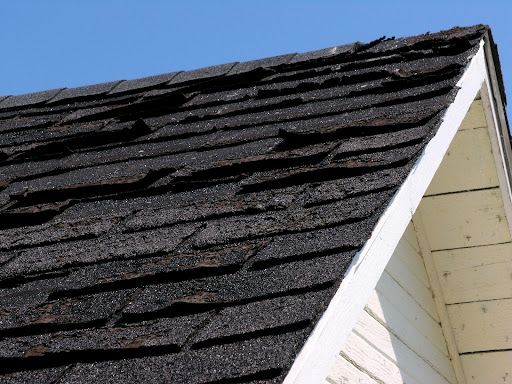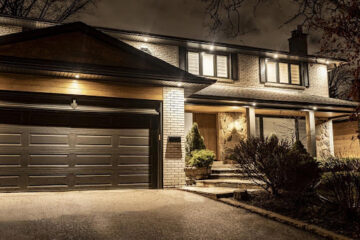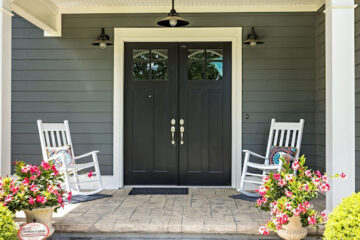The lifespan of a roof varies significantly depending on the material, environmental factors, and how well it’s maintained. Asphalt shingles typically last 15–30 years, while metal roofs can endure 40–70 years. Tile and slate roofs often surpass 50 years, with slate reaching up to a century. Proper installation and routine care play a critical role in ensuring your roof reaches its full potential lifespan.
Table of Contents
- Factors Affecting Roof Longevity
- Lifespans of Common Roofing Materials
- Comparing Roofing Materials: A Quick Reference Table
- Tips to Extend Your Roof’s Lifespan
Imagine this: you’re settling into your new home when, during the first big storm, water begins pooling on your ceiling. The problem? A deteriorating roof that’s past its prime. Understanding how long a roof lasts isn’t just about planning for replacement – it’s about safeguarding your home and avoiding costly surprises. Whether you’re building, buying, or maintaining, knowing the lifespans of different roofing materials is essential.
Beyond materials, factors like climate, installation quality, and upkeep determine how long your roof will protect your home. For instance, extreme weather conditions like heavy snowfall or scorching heat can shorten a roof’s lifespan. Similarly, even the best materials won’t perform optimally without proper installation. This is where consulting professionals like Sunik Roofing company becomes invaluable – they secure your roof is built to last and tailored to your region’s unique demands.
In this guide, we’ll explore everything you need to know about roof longevity, from material lifespans to actionable tips for extending your roof’s life. Let’s dive in and help you make informed decisions for your home.
Factors Affecting Roof Longevity
The material doesn’t solely determine your roof’s lifespan – external factors like climate, installation quality, and upkeep also influence it. Understanding these elements can help you make informed decisions and extend your roof’s durability. Let’s break them down further:
Climate and Weather Conditions
The environment plays a significant role in determining how long your roof will last. Regions with harsh weather conditions, such as heavy rain, snow, hail, or extreme heat, can accelerate wear and tear. For example, freeze-thaw cycles in colder climates may cause materials like asphalt shingles to crack over time. Similarly, areas prone to high winds can lead to loose or missing shingles, requiring more frequent repairs.
Quality of Installation
Even the most durable roofing material won’t perform well if it’s not installed correctly. Poor workmanship can lead to issues like improper sealing, inadequate ventilation, or misaligned components, all of which compromise the roof’s integrity. This is why hiring skilled roofing experts is crucial – they secure that every aspect of the installation process adheres to industry standards, setting the foundation for a long-lasting roof.
Maintenance Practices
Regular maintenance is key to maximizing your roof’s lifespan. Simple tasks like cleaning gutters, inspecting for damage after storms, and addressing minor issues promptly can prevent larger problems from developing. Neglecting maintenance, on the other hand, can lead to leaks, mold growth, and structural damage, significantly shortening your roof’s life.
Lifespans of Common Roofing Materials
When it comes to choosing a roofing material, understanding its expected lifespan is crucial for making an informed decision. Different materials offer varying levels of durability, aesthetics, and cost-effectiveness. Let’s explore the lifespans and characteristics of some of the most common roofing materials available today.
Asphalt Shingles
Asphalt shingles are the most popular choice for homeowners due to their affordability and ease of installation. On average, they last between 15 and 30 years, depending on the quality of the shingles and local weather conditions. Architectural shingles, a premium option, tend to last longer than standard three-tab shingles. However, asphalt roofs are more susceptible to damage from extreme weather conditions, such as hail or high winds, which can significantly shorten their lifespan if not properly maintained.
Metal Roofs
Metal roofs are gaining popularity for their durability and energy efficiency. With a lifespan of 40 to 70 years, they outlast many other materials. Made from steel, aluminum, or copper, metal roofs are resistant to fire, rot, and pests, making them ideal for areas prone to wildfires or heavy rainfall. They also reflect sunlight, reducing cooling costs in warmer climates. While the upfront cost is higher than asphalt, their longevity and low maintenance requirements make them a worthwhile investment for many homeowners.
Tile Roofs
Tile roofs, often made from clay or concrete, are known for their longevity and distinctive appearance. These roofs can last 50 years or more, with some lasting over a century when properly maintained. Tiles are highly resistant to fire, insects, and harsh weather, but their weight requires a strong structural foundation. This makes them a great choice for hot, dry climates, though they may not be suitable for regions with frequent freeze-thaw cycles, as the tiles can crack under pressure.
Slate Roofs
Slate is one of the most durable roofing materials available, with a lifespan of 75 to 100+ years. Its natural stone composition makes it virtually impervious to fire, rot, and pests. Slate roofs exude timeless elegance and can significantly increase a home’s curb appeal. However, they come with a hefty price tag and require professional installation due to their weight and fragility. Homeowners who choose slate should also secure their roof structure is reinforced to support the material.
Wood Shakes and Shingles
Wooden roofs, made from cedar, redwood, or pine, offer a rustic charm that complements traditional and cottage-style homes. They typically last 20 to 40 years, depending on the level of care they receive. Wood shakes and shingles are biodegradable and provide excellent insulation, but they require regular treatment to prevent issues like rot, mold, and insect infestations. They’re best suited for dry climates and may not be the ideal choice for areas with high humidity or frequent rainfall.
Comparing Roofing Materials: A Quick Reference Table
To help you easily compare the lifespans, advantages, and disadvantages of different roofing materials, we’ve created this quick-reference table. Whether you’re planning a new roof or considering a replacement, this breakdown will guide you toward the best choice for your needs.
| Material | Lifespan | Pros | Cons |
| Asphalt Shingles | 15–30 years | Affordable, widely available | Less durable, prone to weather damage |
| Metal | 40–70 years | Durable, energy-efficient | Higher upfront cost, can be noisy in rain/hail |
| Tile | 50+ years | Long-lasting, fire-resistant | Heavy, requires structural reinforcement |
| Slate | 75–100+ years | Elegant, extremely durable | Expensive, fragile, heavy |
| Wood Shakes/Shingles | 20–40 years | Natural look, eco-friendly | Requires frequent maintenance, not ideal for wet climates |
Tips to Extend Your Roof’s Lifespan
A well-maintained roof can outlast its expected lifespan, saving you money and hassle in the long run. Here are some practical tips to secure your roof stays in top condition for as long as possible:
- Schedule Regular Inspections: Have your roof inspected at least once a year, ideally by a professional. They can spot early signs of wear, such as loose shingles or damaged flashing, before they escalate into bigger problems.
- Clean Gutters and Downspouts: Clogged gutters can lead to water backup, which may seep under your roof and cause leaks or rot. Regular cleaning secures proper water drainage.
- Trim Overhanging Tree Branches: Trees near your home may look picturesque, but overhanging branches can scrape against your roof, causing damage. They also drop leaves and debris, which can clog gutters and retain moisture.
- secure Proper Attic Ventilation: Poor ventilation can trap heat and moisture in your attic, leading to premature aging of your roof. Good airflow helps regulate temperature and prevents issues like mold growth or ice dams.
- Address Minor Repairs Promptly: Small problems, like a missing shingle or a tiny leak, can quickly turn into major headaches if ignored. Tackling repairs early can save you time and money.
Final Thoughts: Choosing the Right Roof
Choosing the correct roofing material is perhaps one of the most significant settings that a homeowner should ever make. That is not to say that it is all about the aesthetics; there is weighing out of durability, prices, and the environment to come up with something that fits your home and your lifestyle. Choosing between the cost-effectiveness of an asphalt shingle, the durability of slate, or the energy efficiency of metal, knowledge of the life times and other attributes of the material will enable you to make a wise decision.
Note that the lifetime of a roof is not always fixed – it depends on care that you give it. Giving regular maintenance must be carried, timely repair must be done, and professional advice must be taken to increase its life to several decades, securing your house. By being educative and proactive you will make sure that your roof will continue to be an effective barrier against the elements.
A roof will have a way of giving value to your home and both safety and comfort when you invest some time and efforts towards it today.



